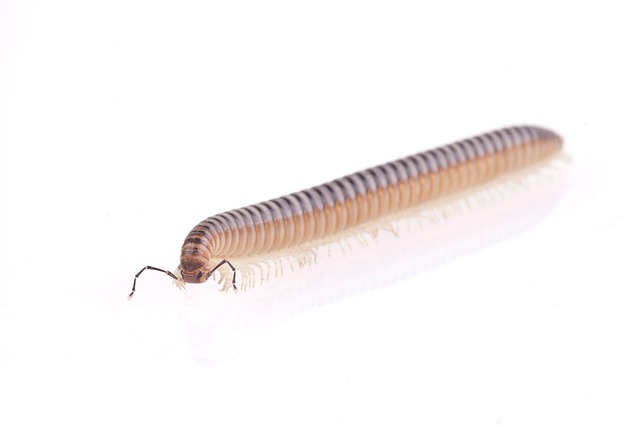Centipedes infiltrate homes through cracks and dark spaces, attracted by moisture; effective centipede pest control involves sealing entry points with high-quality sealants, regular inspections, and maintaining a dry environment to prevent infestations. Use silicon-based sealants for doors/windows and latex for larger cracks, inspect regularly, keep areas clean, and consider professional treatments for optimal protection.
Centipedes are relentless intruders, often finding their way into homes through cracks and gaps. This article guides you through effective centipede pest control by sealing entry points. We’ll explore their behavior and preferred routes of access, revealing the best practices for blocking these tiny invaders. From understanding common problem areas to choosing the right sealants, you’ll learn how to fortify your home against centipedes. Implement these strategies for long-lasting protection and reclaim your living space.
Understanding Centipede Behavior and Entry Points
Centipedes are notorious for their ability to find even the tiniest cracks and gaps in your home, making effective centipede pest control a top priority for homeowners. Understanding their behavior is key to sealing entry points successfully. These pests are drawn to dark, narrow spaces, often entering through small openings around pipes, electrical wires, or foundation cracks. They prefer moist environments, so areas with high humidity or water leaks can be particularly attractive.
By identifying and sealing these common access points with appropriate materials, such as caulk or silicone, you create a physical barrier that disrupts their natural pathways. Regular inspections are crucial to spotting potential entry points, ensuring your home remains centipede-free, and providing peace of mind for any homeowner concerned about this persistent pest.
Effective Sealing Methods for Cracks and Gaps
When it comes to centipede pest control, effectively sealing cracks and gaps is a key strategy to prevent these pests from invading your space. The right sealing methods can create an impenetrable barrier against centipedes, ensuring they cannot find their way into homes or buildings. One of the most effective approaches is using high-quality silicon-based sealants. These versatile materials can fill even the smallest crevices and gaps, providing a durable and flexible solution. They are particularly useful for sealing around windows, doors, and other entry points where centipedes tend to sneak in.
Additionally, physical barriers like steel wool or metal mesh can be installed in larger cracks and openings. These materials act as a secondary defense by preventing centipedes from reaching areas that have been sealed with silicon caulk. Regular inspections are also crucial for maintaining an effective centipede pest control system. By regularly checking for new cracks or gaps, you can promptly address them before the pests find a way in. This proactive approach ensures your sealing methods remain successful over time.
Common Problem Areas and Sealant Applications
Centipede pests can infiltrate homes through various cracks and gaps, making it crucial to identify and seal common problem areas effectively. Entry points often include spaces around pipes, electrical wires, doors, and windows. These tiny creatures are adept at squeezing through narrow openings, so sealing these access points is essential for centipede pest control.
Choosing the right sealant depends on the specific application. Silicone-based sealants are ideal for filling gaps around doors and windows, creating an airtight barrier. For larger cracks in walls or floors, latex-modified sealants offer a more flexible solution, ensuring long-lasting protection against centipedes and other pests. Regular inspection and maintenance of sealed areas are recommended to prevent re-entry by these persistent intruders.
Best Practices for Long-Lasting Centipede Prevention
When it comes to long-lasting centipede pest control, a multi-layered approach is key. Start by identifying and sealing all potential entry points—cracks in walls, gaps around pipes and wires, and any openings larger than a penny. Use high-quality sealing materials like silicone caulk or foam insulation to create an impenetrable barrier. Regularly inspect and reapply sealants as needed, especially after extreme weather events.
Additionally, maintain a clean and clutter-free environment, removing potential hiding spots like piles of firewood, landscaping debris, and thick vegetation close to your home. Encourage proper drainage around your property by trimming overgrown grass and installing gutters to prevent water pooling, which attracts centipedes. These best practices, combined with professional treatments when necessary, will significantly reduce the risk of centipede invasion.
In conclusion, effectively blocking centipede access through professional sealing of cracks and gaps is a multifaceted approach that combines understanding their behavior, utilizing suitable sealing methods, targeting common problem areas, and adhering to best practices. By implementing these strategies, homeowners can significantly enhance their centipede pest control efforts, ensuring long-lasting protection against these pesky invaders.
